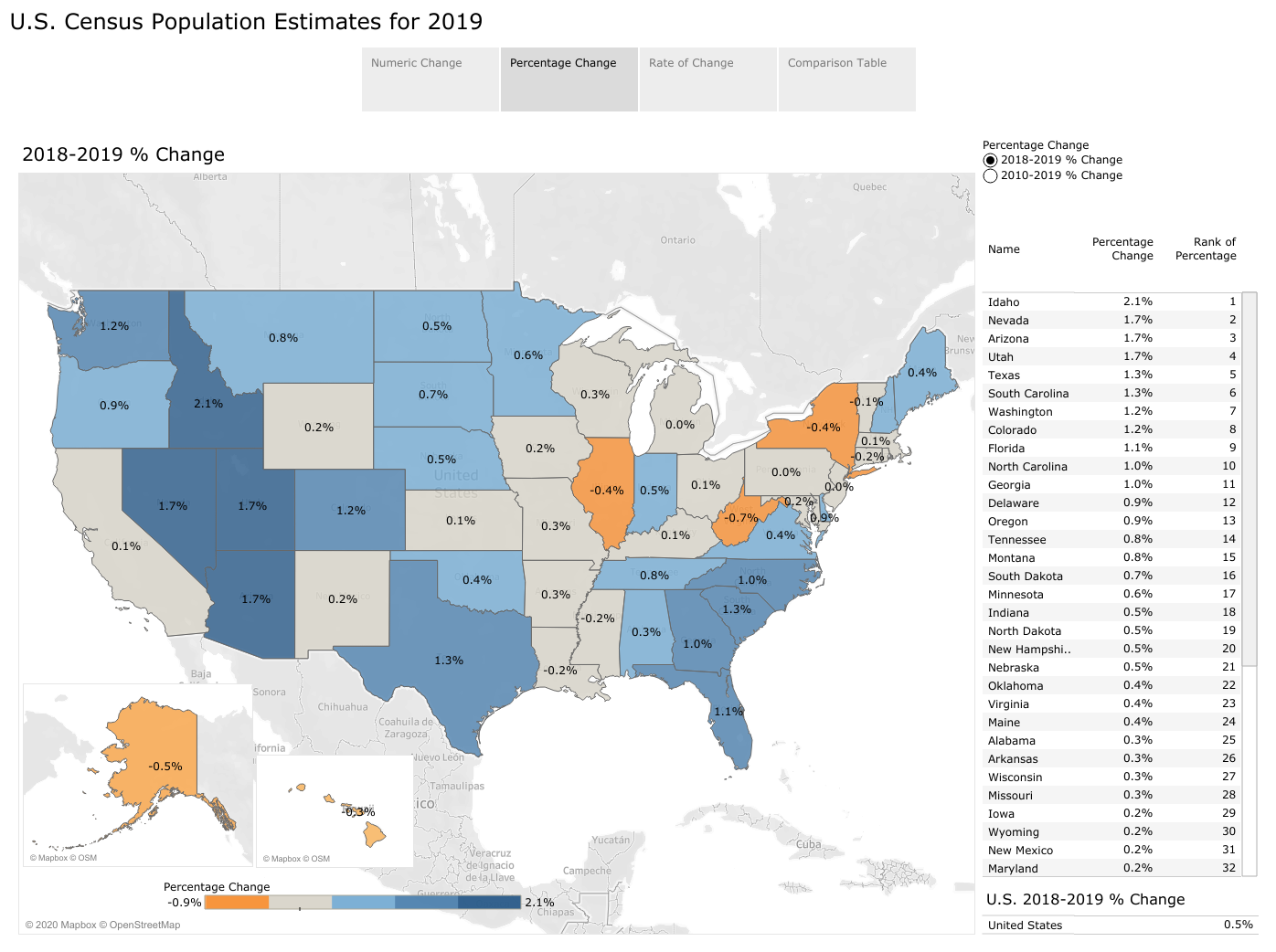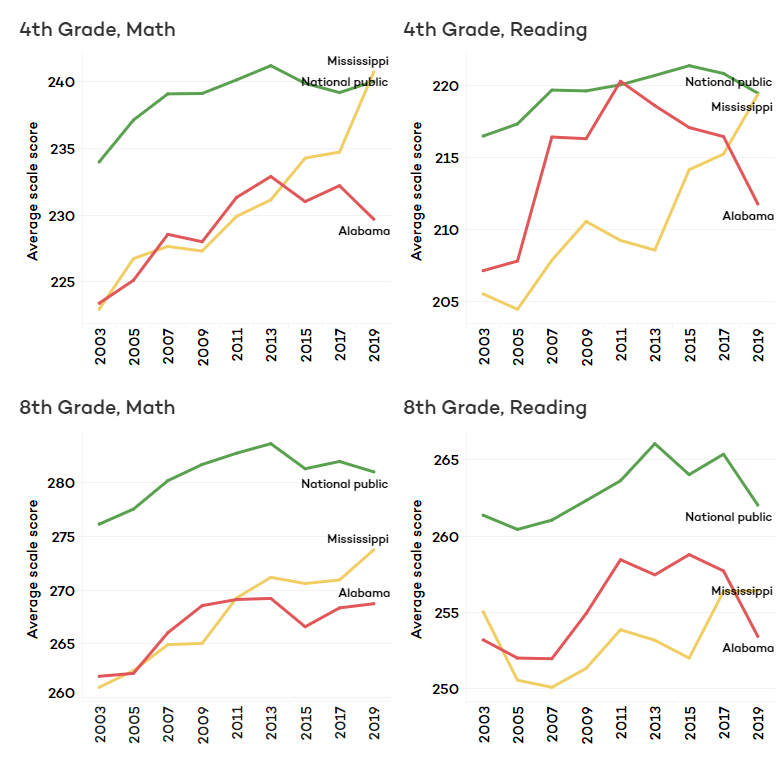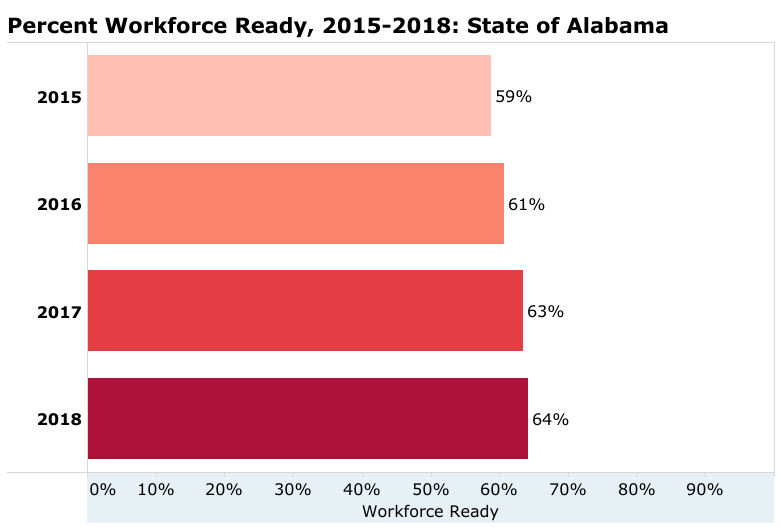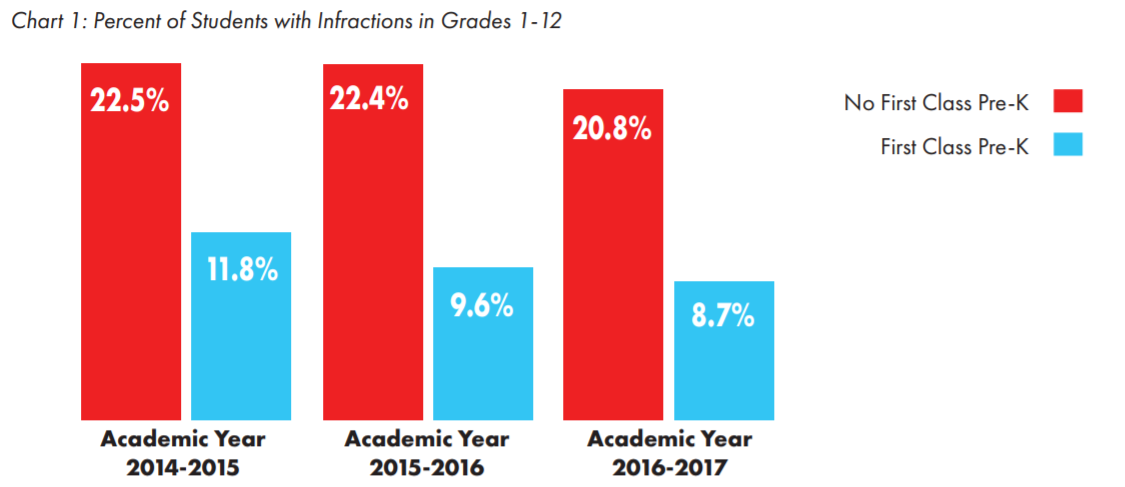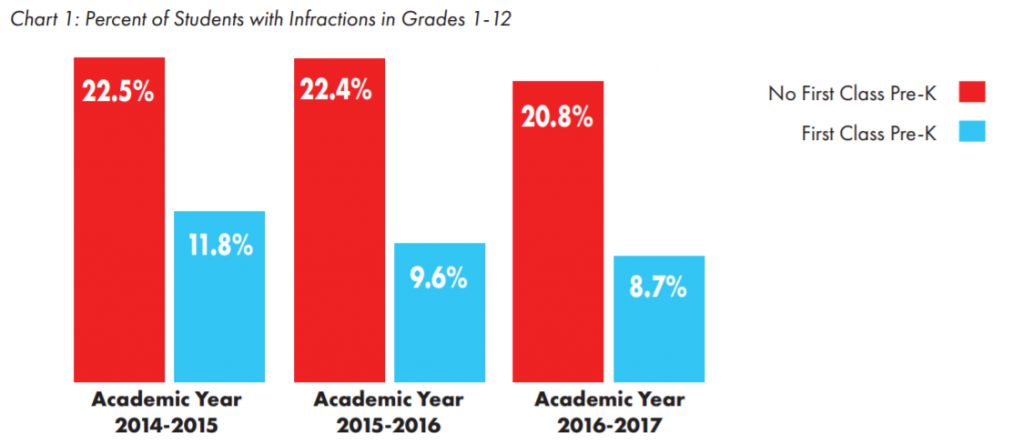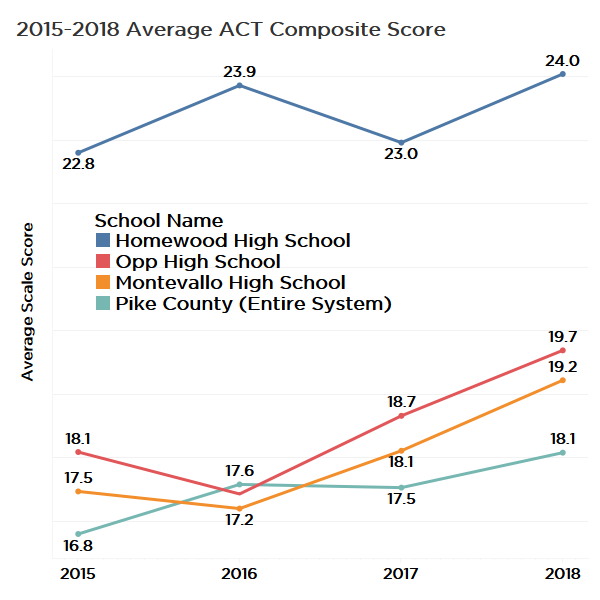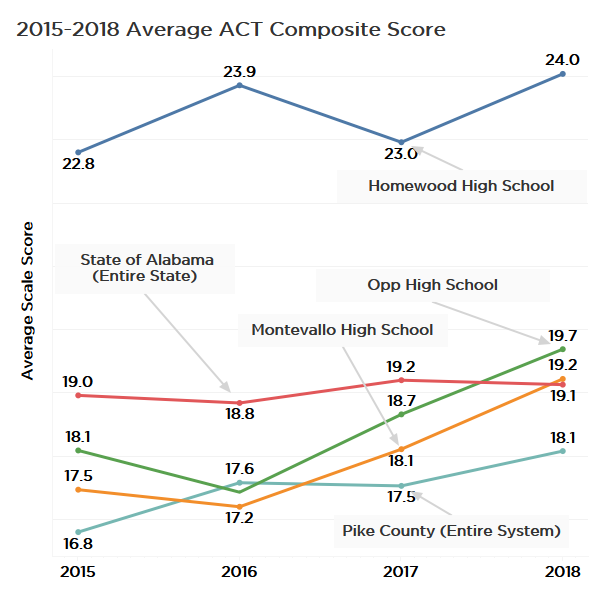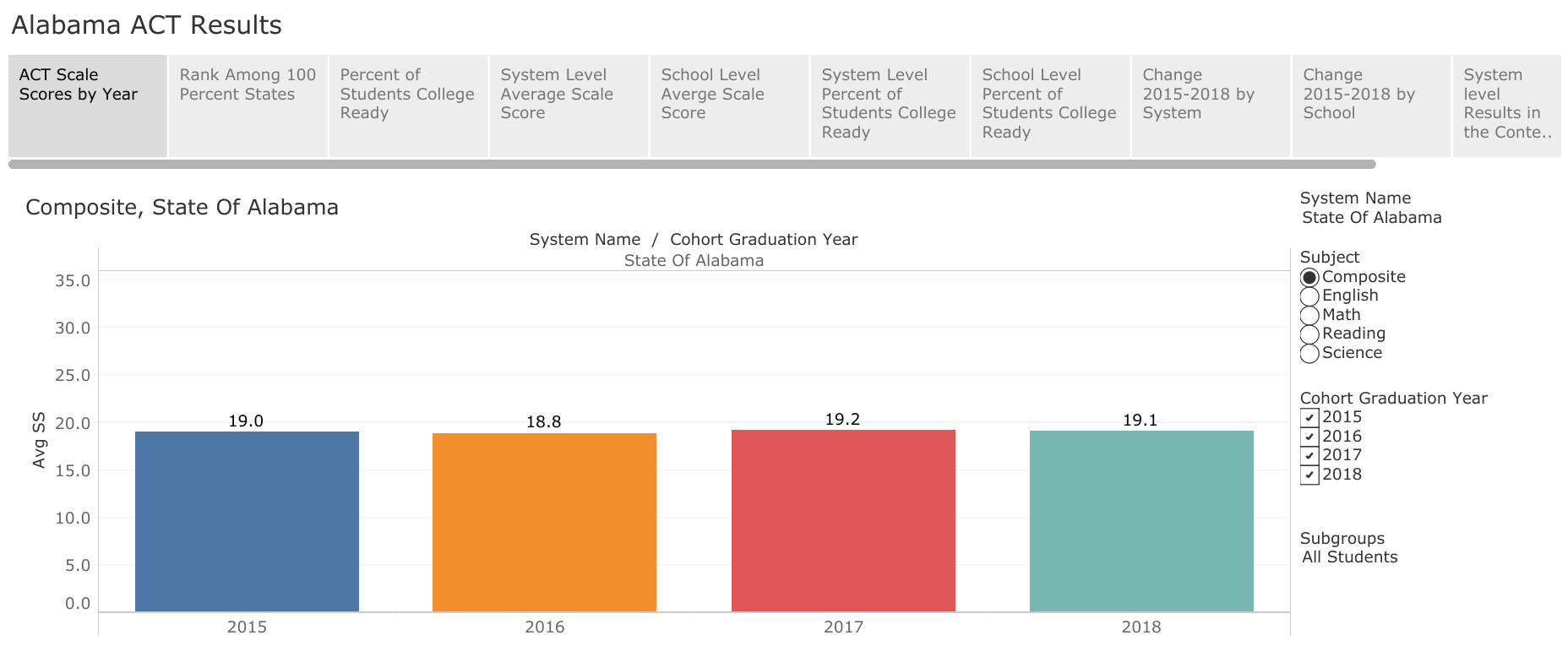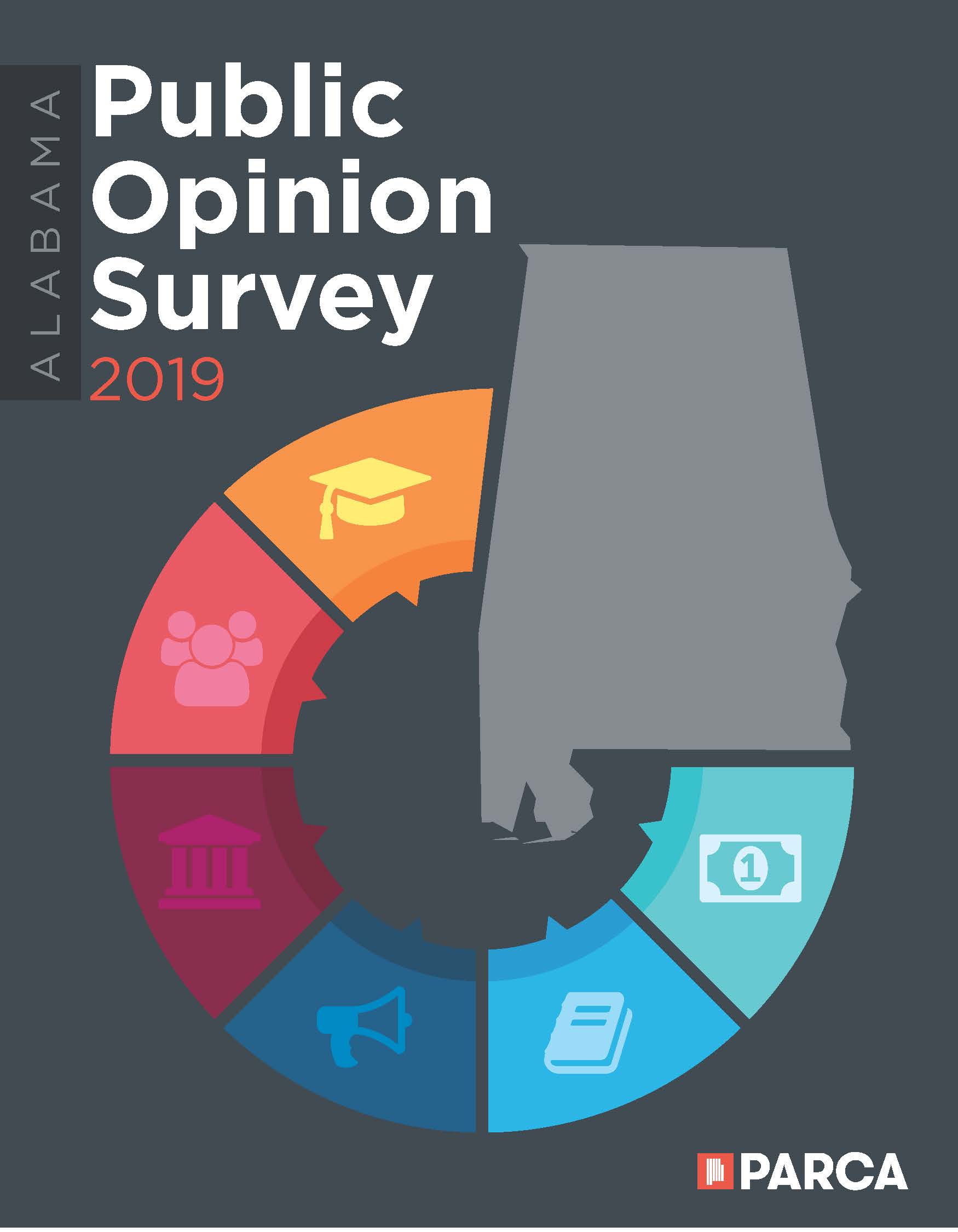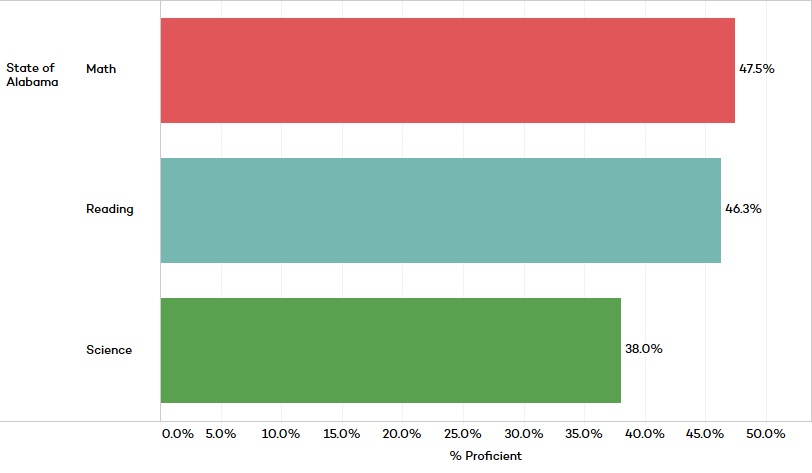
Alabama is scheduled to implement its new state education tests this spring. In the meantime, statewide results from the Scantron assessment in 2019 have been released by the Alabama State Department of Education. They show little change from 2018. In both years, less than half of Alabama public school students in grades three through eight scored proficient in reading and math.
For the state as a whole, 47% of students were proficient in math in 2019 and 2018, and 46% were proficient both years in reading.
The overall proficiency rate for science in 2019 was 37%, a very slight decrease from 38% in 2018.
This comes at a time when Alabama’s performance on the National Assessment of Educational Progress (NAEP) has dropped.
New State Assessments
2019 is the second year of data from Scantron, which in 2018 replaced ACT Aspire as the primary state assessment used for measuring academic progress in Alabama public schools since 2013-2014. In June
Scantron Statewide Results for 2019
Comparing Subjects. Selecting the first tab above shows that among the three subjects assessed with Scantron, once again in 2019, math generated the highest
Under Aspire, math made ongoing progress each year climbing from 40% proficient in 2014 to 48% in 2017. The increase from 40% with Aspire to 47% with Scantron seems about normal.
In contrast, reading proficiency under Aspire showed little change each year rising from 39% in 2014 and to 40% in 2017. The jump for reading from 40% with Aspire to 46% with Scantron was more significant than the change between tests in math.
In 2019, the Scantron science assessment continued to generate the lowest proficiency rate among the three subjects tested, at 37% proficient, as it did in 2018 with 38% proficient.
Comparing Grade Levels. The second and third panels above provide grade level comparisons. Differences in math proficiency by grade for 2019 and 2018 are minimal. Across all grades under Scantron and Aspire, math proficiency levels are at their highest in the third grade, following the trend in which reported proficiency levels drop in the higher grades. This pattern is less substantial when looking at a particular cohort of students moving from grade-to-grade but still applies. With both Scantron and Aspire, math proficiency drops sharply in the seventh grade, though less dramatically under Scantron in both 2019 and 2018.
Third-grade math is the one grade and subject each year in which the majority of students meet or exceed the benchmark for proficiency. In 2019, 58% were proficient in third-grade math, up slightly over 57% in 2018. This level of proficiency is very similar to Aspire’s third-grade math results, which grew from 52% in 2014 to 59% in 2017. After third grade, though, math proficiency drops, winding up at 45 percent of students demonstrating proficiency by 8th grade.
Reading proficiency in 2019, using Scantron, shows a steady drop from 48% proficient in the third grade to 43% in the 8th grade. This reflects very little change from 2018, in which proficiency ranged from 48% in the third grade to 44% in the 8th grade. Though proficiency levels get lower in the higher grades, they are not dramatically lower as found in math. The more dramatic grade-by-grade drop-in math proficiency was evident in Aspire as well, though even more pronounced.
Why are proficiency levels dropping from grade to grade? First, a decrease at the higher grade levels is normal. During the early grades, math and reading are focused on helping young students learn basic skills, but in the higher grades, math becomes more complex and introduces algebra. Reading instruction also becomes more demanding as students move from learning to read to reading for understanding. Attitudes about external state assessments among younger students in the earlier grades could also be different from students in the higher grades.
But why the difference between reading and math? The less dramatic reduction in proficiency levels in reading from grade to grade might suggest that either students are more effective in learning the basics in reading as a foundation for later grades or that the material in math becomes harder to master and teach. Like many places, the demand for math teachers in Alabama far exceeds the supply of available, qualified math teachers. Proficiency scores on the state Aspire math test for tenth graders significantly dropped from earlier grades to as low as 18% proficient in 2016-17, compared to 33% in reading. Tenth-grade proficiency is not assessed under Scantron. Furthermore, high school ACT scores in Alabama for college admission are higher in reading than in math.
Science is a little different. The drop in proficiency among students in the higher grades takes on a different pattern in science. In 2015, Alabama only tested science in the tenth grade, and 21% tested as proficient or above. In 2015 and 2016, grades three through eight and grade ten were tested. Proficiency levels actually increased from grade-to-grade in grades three through six, with the peak level of proficiency in the 6th grade, then began dropping in the 7th grade, reaching the lowest level in the tenth grade. In Aspire’s last year (2016-17), science was tested in grades 5, 7 and 10. Proficiency levels dropped in each higher grade, as would be expected from past performance in these grades. Finally, under Scantron science was tested in grades 5 and 7, dropping from 40% (grade 5) to 35% (grade 7) in 2018, and from 39% to 35% in 2019.
The low scores in science are worthy of concern, for Alabama and the nation. Though reading and math are more fundamentally essential, science relates to problem-solving skills, reasoning, curiosity, critical thinking, good measurement skills, and applied
Focus on Third Grade Reading and the Alabama Literacy Act
Early reading is a pivotal predictor of academic success. Children who learn to read in the early years have a foundation that will help them in other subjects. Early brain development and schooling through grade three are extremely important in shaping a person’s education and life chances. The figure above shows the percentage of students in each of the four proficiency categories for third grade reading from 2014 through 2019. Scantron labels used in 2018 and 2019 for the different levels of proficiency are listed below:
Level 1 (Red—Emerging Learner)
Level 2 (Yellow—Developing Learner)
Level 3 (Light Green—Proficient Learner)
Level 4 (Dark Green—Distinguished Learner)
Students who achieve proficiency or above are in Levels 4 and 3 (dark green and light green). Similar to a traffic light, these colors signal “go.” This is followed by yellow (“use caution”) and red (“stop”).
The Figure above shows that 21% of third-graders read at the lowest level in 2019. Under Aspire, in 2017 that percentage was 39%. It will be interesting to see how this comes out in the new assessment.
To address the high percentage of students not reading with proficiency, in 2019 the Alabama Legislature adopted the Alabama Literacy Act.
The Literacy Act refocuses attention on early reading in kindergarten through third grade, with the expectation that all students should be able to read by the end of the third grade. Beginning in the 2021–22 school year, students falling into the lowest group in reading may be at risk of being retained. Though minority students will be disproportionately affected, research shows that students who are held back and learn to read with intensive reading intervention do better in school than comparable students who are not held back.[1] A key issue relates to the capacity of the state and local systems to provide the intensive assistance as students are held back.
The State Superintendent of Education is convening a standing task force to provide recommendations for comprehensive core reading and reading intervention programs, teacher professional development in the “Science of Reading,” and valid and reliable assessments that can be used for screening, diagnostic, and instructional purposes. Research has identified how skilled reading works, and helping teachers learn the science behind reading can make a difference, as demonstrated in Mississippi.
Comparing Systems and Schools – How Did Your School Do?
The tabs above list the percent proficient in each subject for all local systems and schools. Click on any one of those tabs and look up schools or local systems most important to you and see how they compare to other systems.
Across the state, in both math and reading, 42% of school systems met or exceeded the state average for percent proficient in math and in reading. Fifty-two percent achieved this in science. Clustering occurs where systems and schools perform similarly in all three subjects, especially among the wealthiest and poorest systems. Performance among the top ten and lowest ten in all three subjects is consistent. Still, throughout the state, you can also find variation that shows different local strengths. For example, though Haleyville is ranked 109 in Science (28% proficient), and 103 in reading (36%), it is 53 in math (49% proficient).
It would be useful to learn what is causing differences of this nature and why some systems and schools are stronger in particular subjects than others.
Local Change in Proficiency Over Time
In addition to absolute levels of proficiency in a school system or school, the change occurring over time is another important indicator of performance. This can be an indicator of value added by the school. In schools where students come from family backgrounds in which parents have high income and educational attainment, proficiency levels may already be high, with more limited prospects for change in the school’s proficiency level. In schools where a high percentage come from a background of poverty and low parental educational attainment, students are more likely to enter school less prepared and fall short of their actual potential on assessments. Schools and systems making an effective, concerted effort to improve performance can make a difference. Though absolute scores may still be low, positive growth reflects deliberate improvement, sometimes under very challenging conditions.
The dashboards above list and rank the school systems in the state related to percentage point change in the proficiency rate from 2017-18 to 2018-19 in each subject. The bottom section of each dashboard shows the change in individual schools within each system. PARCA’s analysis below highlights the systems with the highest change in each subject over this period.
Table 1: Percentage Point Change in Proficiency, 2018 to 2019
| Math | Reading | Science |
| Andalusia City: 11% | Andalusia City: 9% | Piedmont City: 17% |
| Perry County: 10% | Perry County: 8% | Coosa County: 11% |
| Sumter County: 10% | Phenix City: 4% | Marengo County: 10% |
| Leeds City: 6% | Lanett City: 3% | Tallassee City: 9% |
| Tallapoosa County: 6% | Sumter County: 3% | Perry County: 8% |
| Daleville City: 6% | Scottsboro City: 3%* | Andalusia City: 7% Elba City: 7% |
*Note that the Macon, Piedmont, Dallas, Butler, Walker, Brewton and Elba also improved reading proficiency by 3 percentage points.
Andalusia City and Perry County were among the most improving systems in all three subjects, and Piemont’s 17 percentage point increase in science is outstanding. Across the state, proficiency levels range in math from +11 to -8%, in reading from +10 to -7%, and in science from +17 to -13%.
Table 2 shows the change in proficiency over 2014-2019, which is complicated by comparing Aspire and Scantron results.
Table 2: Percentage Point Change in Proficiency, 2014 to 2019
| Change in Math Proficiency | Change in Reading Proficiency | Change in Science Proficiency |
| Geneva County 26% | Jacksonville City 22% | Piedmont City 36% |
| Saraland City 22% | Scottsboro City 21% | Saraland City 35% |
| Dale County 22% | Trussville City 21% | Etowah City 32% |
| Marengo County 22% | Geneva County 18% | Satsuma City 30% |
| Trussville City 21% | Saraland City17% | Leeds City 29% |
| Russell County 20% | Dale County 15% | Geneva County 28% |
| Lamar County 20% | Brewton City 14% | Russell County 27% |
| Houston County 19% | Piedmont City 13% | Dale County 26% |
| Troy City 19% | Talladega County 13% | Opp City 26% |
| Clarke County: 19% | Perry County 13% | Geneva City 26% |
| Haleyville City: 19% | Tuscumbia City 13% | Cleburne County 26% Henry County 26% |
Over this longer period, a different set of systems are shown. Perry, Leeds, and Marengo systems again are listed, and Piedmont continues to come out on top with improved science proficiency. Systems with significant improvement in two or more of the subjects include Geneva County, Saraland City, Perry County, Dale County, and Russell County. Across the state, change ranged from +26 to -8% in math, +22 to -5% in reading, and +36 to -5% in science.
Performance of Subgroups in Alabama
In Alabama and across the country, differences in proficiency rates among various subgroups of students continue to be a concern, and the gap between students who are white and students of color is increasing. Proficiency rates for all subgroups changed very little from 2018 to 2019. More positive growth occurred between 2014 to 2019, though comparisons are between Scantron and Aspire assessments.
- Students who are African-American, English Learners, and those in special education all perform at a lower level than do economically disadvantaged students as a group.
- A higher percentage of Hispanic students, except those who are English Learners, attain proficiency in math and science than do students who are Black. Those two groups have the same percent proficient in reading. Among all the sub-groups, English Learners appear to struggle the most. They are ranked low in all subjects, especially science and reading, where they fall below all racial groups, economically disadvantaged students, and students in special education.
- Asian students are the highest performing in all three subjects. Wide gaps continue to exist between African-American students and both Asian and White students, and between Hispanic students and both Asian and White students. Comparing proficiency results in 2014 and 2019, the gap between students who are White and those who are Hispanic or Black is increasing. At the same time, Black students have made significant progress. Math has been a stronger subject for Hispanic students than Black students, though in reading the initial gap between these two groups has been closed.
- Same as last year, female students in the state performed higher than males in math and significantly higher in reading, while male students scored slightly higher in science.
Impact of Poverty
Students growing up economically disadvantaged are less likely to be read to in the early years, are exposed to fewer words, and are more likely to be exposed to health problems that can affect their capacity to learn in school and perform on tests. The education level and income of a student’s parents becomes a significant predictor of performance on standardized tests such as Scantron.
But some schools are better equipped to help all students learn and exceed expectations.
The scatterplot charts found in this section show the general correlation between proficiency levels and poverty levels. A school system’s proficiency rate determines its vertical position on the chart: the higher on the chart, the higher the proficiency rate. A system’s percent of economically disadvantaged students, measured by the percentage of students qualifying for free meals under the National School Lunch Program, determines the system’s position on the horizontal axis. Systems with a higher percentage of economically disadvantaged students will appear to the left of the chart and those with a lower percentage will be to t
Exceeding Expectations or Falling Short. The line displayed in the scatterplot is the average proficiency level for a given level of poverty. Those systems and schools above the line are exceeding expectations given their percent of economically disadvantaged students, and those below the line are falling short of expectations. These charts show that systems with similar poverty levels often show very different proficiency levels. In other words, school systems can and do exceed expectations through effective teaching, student support, and school organization and culture.
As an example, consider the chart on Scantron math performance and percent poverty. Saraland is exceeding expectations with 75% of their students scoring math proficient while 37% are economically disadvantaged. In contrast, in Pike Road only 16% of students are
Conclusion
The Scantron results from 2019 showed very little change from 2018. The gaps that exist between school systems and among student subgroups continue to be an area where more work is needed, especially if Alabama is to fulfill its vision as a state characterized by a vibrant, innovative and relevant workforce.
This is an exciting year in Alabama as the state rolls out its next suite of assessments at the same time that new math standards have been established. Because of the Literacy Act, the state is refocusing attention on early reading. It will be important to establish a baseline and provide feedback on the validity, reliability,
This comes at a critical time when NAEP scores in the state have dropped, when the state’s NAEP proficiency rates continue to be very low, and when the state’s ranking in the nation on math and reading has dropped to the bottom of the barrel.
- Alabama’s 2019 proficiency level in fourth and eighth-grade math was dead last, 52 out of 52 (the 50 states plus the District of Columbia and the Department of Defense schools). In 2017, the state ranked No. 48 in fourth-grade math and 46 in eighth-grade math.
- In fourth grade reading the state’s proficiency level was ranked 49 out of 52, dropping from 37 in 2017. In eighth grade reading the state’s ranking dropped from 43 to 49.
These national comparisons provide perspective. Alabama’s schools and teachers in high poverty communities face serious challenges, but hope can be found in the progress made by neighboring states and the steps being taken in Alabama to improve literacy and mathematics instruction.
Reference
[1] West, M (2012). Is Retaining Students in the Early Grades Self-Defeating? See https://www.brookings.edu/research/is-retaining-students-in-the-early-grades-self-defeating/








